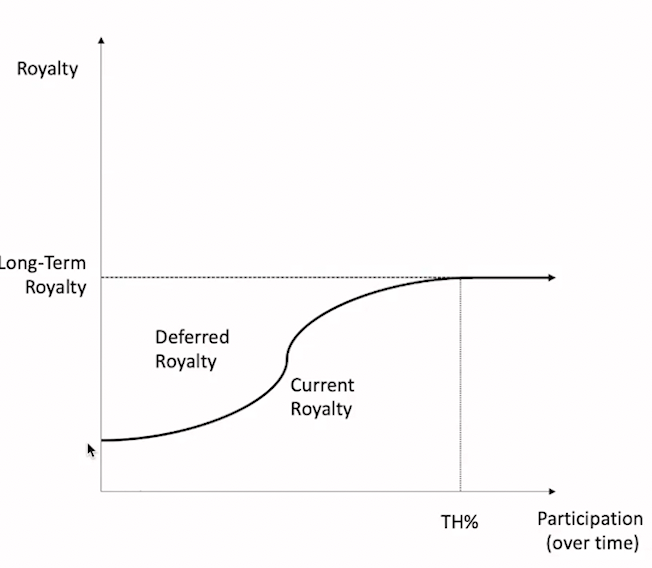A 360 Degree View of LIFT
One of the most important components of the recent WiFi 6 pool announcement was the Licensing Incentive Framework for Technologies (LIFT) royalty payment structure. Several participants in our recent Wi-Fi 6 webinar described the rationale behind LIFT and how it operates. This post assembles their comments to deliver a 360-degree view of LIFT, including comments from Sisvel (as patent pool administrator), an economist, two founding patent owners of the pool, and an important pool licensee/licensor.
The Administrator’s View
Let’s start with comments from Andrea Rombolà, Program Manager for the Wi-Fi 6 pool, who described Sisvel’s motivation for creating LIFT. “LIFT was born out of our vision at Sisvel to create licensing programs that accelerate technology adoption and increase the size of the pie for patent owners and implementers. One problem in licensing negotiations is the competitive disadvantage perceived by early licenses, which claim, among others, that they need to factor in a bigger cost in the bill of material, the cost of the license, than their competitors, which have not taken a license yet.”
“After years of interaction with patent holders and implementers of several technologies, we realized that in certain areas like Wi-Fi, this problem could be mitigated. We came up with LIFT, which has been over two years in the making and it has been fine-tuned with the help of the founding members of this pool. All of them liked the concept behind it and very enthusiastically engaged in discussions with us.”
The Economist's View
Bowman Heiden, the Executive Director at The Tusher Center, University of California, Berkeley, and the Co-Director at the Gothenburg Center for Intellectual Property, presented the economist’s view. Heiden started by describing the “prisoner’s dilemma,” a classic game theory construct by which two suspects are questioned separately by the police. “The best outcome would be for both suspects to stay quiet. However, if one suspect talks, the consequences are worse for the suspect that stays quiet. Thus, while the suspects would be better off protecting one another, each of them is incentivized to act in their own self-interest, which produces a worse result than cooperating.”
The corollary in patent licensing is that the best long term result occurs when both parties cooperate and implementors pay a fair royalty to patent owners. However, early implementors may perceive themselves at a disadvantage because royalties add to their cost structure but not to the cost structure of competitors that refuse to take a license.
According to Heiden, “Sisvel developed the LIFT model...to remove the asymmetry between early adopters and reluctant licensees. LIFT incentivizes licensees by providing a partial immediate payment that's based on the license penetration. And then there's a deferred amount of remaining liability that they pay later on, as the penetration goes up–and they pay this at a discount so that the early adopters are not at a disadvantage against later adopters.”
Heiden’s diagram illustrates the theory. Early licensees “Pay less in the beginning. It ramps up as participation grows. They carry this liability as a deferred royalty, and that only is paid if the participation gets to a certain level”
Heiden concludes, “The overall goal of LIFT is to increase efficiency and reduce friction within the SEP market. So when you create a platform that incentivizes a large proportion of licensors and licensees to participate, it benefits all the parties involved. So one way to say this is a rising wave lifts all ships.”
The Patent Owner’s View
Ultimately, it’s the patent owners that set pool royalty terms, and the founding members of the Wi-Fi 6 pool had to approve the LIFT payment structure before it went into place. They did so because they share Sisvel’s vision, as expressed by Rombolá, for “licensing programs that accelerate technology adoption and increase the size of the pie for patent owners and implementers.”
For example, Jin Sam Kwak, Chief Executive Officer, and Founder at WILUS Inc, a founding member of the Wi-Fi pool, describes LIFT as “an alternative scheme for sponsoring the adoption of new technology for implementers. Adjusting the royalty payments based on the global market penetration of the Wi-Fi 6 technologies can incentivize the new standard adoptions. With LIFT, since the Wi-Fi 6 pool is made more flexible and attractive to potential licensees, they can join the pool as quickly as possible.”
This holistic view was echoed by Jako Eleveld, Head of IP Licensing, and VP at Philips, which is both a patent owner and pool licensee. During the webinar, Eleveld commented that “LIFT prevents the problem that we usually have in patent pools that nobody wants to jump in first because paying full royalties from the start may be a competitive disadvantage. By paying only a fraction from the start and more later, when other implementors sign up as well, we have alleviated that problem. So, that is good for implementers, and what is good for implementers is also good for the pool and hence for patent holders. We believe that this avoids holdout in the market, and more implementers will sign up earlier, which is beneficial.”
The Implementor’s View
Huawei has been a Wi-Fi implementor for almost 20 years. Huawei’s view of LIFT was expressed by Zhiyong (Alan) Fan, Vice President, Head of IPR Department at Huawei Technologies, who commented, “LIFT is a very creative way to do licensing. It encourages early adoption of new technologies, and it helps the new licensees to maintain their competitiveness against the companies who have yet to take the license.” Huawei is also a patent owner and licensee of Sisvel’s Wi-Fi 6 Pool.
As you’ve heard from all involved, by protecting the competitiveness of early pool licensees, LIFT encourages early technology adoption of Wi-Fi 6, helping the market expansion, pool participation and ultimately the consumers, that can buy their innovative new products. Royalties paid to patent owners fund future innovations that deliver technology enhancements for Wi-Fi 7 and beyond, perpetuating the innovation cycle.
This makes LIFT look good from any angle.
Photo by Shad0wfall from Pixabay

